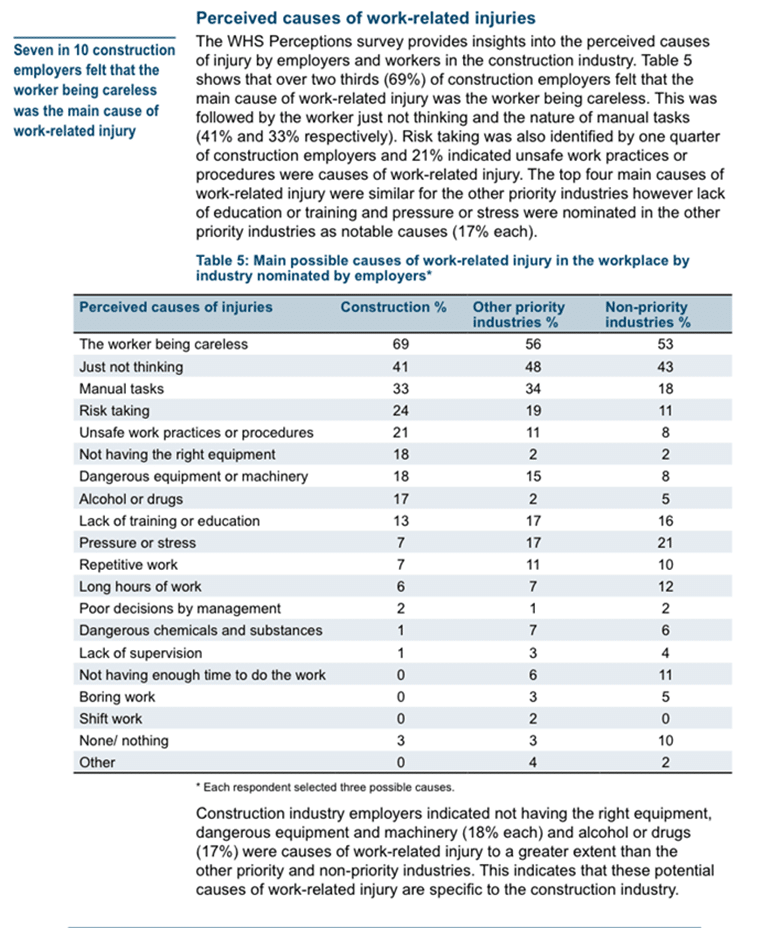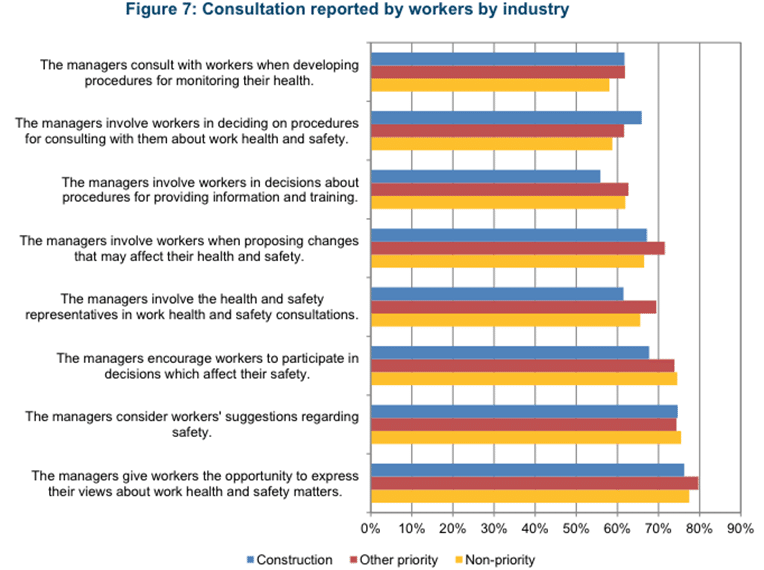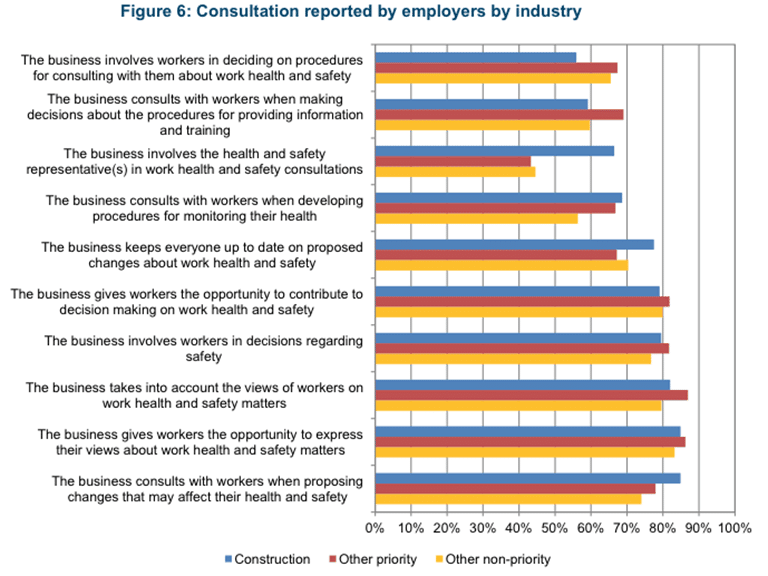Safe Work Australia Continues to Perpetuate Safety Mythology
 In December 2014 Safe Work Australia published Work Health and Safety Perceptions: Construction Industry. Despite the intentions of the report yet again Safe Work Australia continues to perpetuate safety mythology just as it does by endorsing such nonsense as Hazardman.
In December 2014 Safe Work Australia published Work Health and Safety Perceptions: Construction Industry. Despite the intentions of the report yet again Safe Work Australia continues to perpetuate safety mythology just as it does by endorsing such nonsense as Hazardman.
On page 6 of the report is the following table.
Observe the two highest ranked causes of work related injuries and please tell me what they mean. At no place in the report is there any critique of such language or discourse. At no place is there any connection between these false beliefs and any sense of definition in cause as a problem. At no place is connection made between erroneous beliefs and underlying cultural mythology. The report publishes this table twice.
What does being careless mean? Ah, well, the solution to this problem must be making the work force careful. What does that mean? Just like the mythology of ‘common sense’ here we see yet again a report from safe Work Australia that not only misses the point but endorsing safety mythology. Safety mythology is one of the principle cultural problems we have in building and construction. Finding a cause of carelessness is not a cause but an excuse for blaming. What appears to be carelessness could be easily explained by an understanding of social psychological conditions. Is daydreaming carelessness? Is automaticity carelessness? Is stress carelessness? Is attribution of risk carelessness? There are hundreds of reasons that could give definition to this obscure and unhelpful discourse but Safe Work Australia simply endorses such thinking.
Similarly, what does ‘just not thinking’ mean? If we actually gave definition to such obscure language we might be able to be constructive in response but again safe Work just lets this one go. Whilst some of the lesser ranked causes are helpful, these two left without comment defeat the whole psychology of the report. If the problem in building and construction is primarily a cultural issue (http://www.engineersaustralia.org.au/sites/default/files/shado/National%20Engineering%20Registration%20Board/getting_home_safely_report_-_construction_safety_inquiry_nov_2012.pdf) why does Safe Work Australia continue to focus on the mechanics of risk rather than the culture of risk in organisations? The acceptance and endorsement of safety mythology and silence on nonsense language in safety (zero harm, common sense, be careful, just not thinking) is the rockbed of culture formation.
As for consultation observe the following from the report:
Where do they get this stuff from? Walk on to any construction site and this is not the story. Workers will tell you very quickly they are not ‘consulted’ but ‘told’. For a very different take on the culture of building and construction perhaps you might like to look at the results from the MiProfile survey that assesses implicit knowledge in building and construction (http://issuu.com/masterbuildersact/docs/cbn3-2012?e=2339644/2817283 ).
There is simply not enough space in this blog to critique this report further but suffice to say unless the regulators begin to shift the focus from mechanics and bureaucracy to understanding culture and social psychology, we will continue to have those in authority perpetuating myths and nothing will change.






Do you have any thoughts? Please share them below